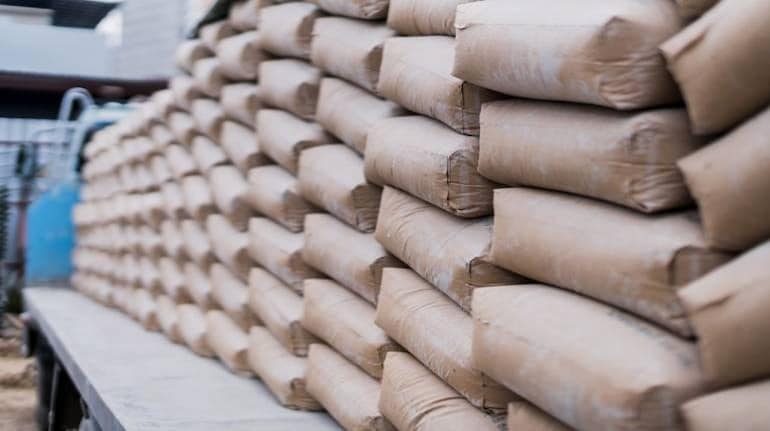



The Adani Group’s entry has fundamentally altered the cement industry structure. After the global financial crisis, building material companies were saddled with high debt on balance sheets. Their subsidiaries, including in India, had only one mandate—large dividends that could be deployed by the parent companies to reduce debt. This capital allocation decision led to market share loss over the past decade for multinational cement companies in India.
The combined market share of Ambuja, ACC and Heidelberg dropped from 24 percent in FY07 to 17 percent in FY22. Domestic players like Jaypee, UltraTech Cement, Shree Cement and a few other regional players capitalised on this, growing capacities/volumes faster than the industry.
After UltraTech's acquisition of Jaypee’s assets, the industry will undergo yet another tectonic shift following the sale of Holcim India assets to billionaire Gautam Adani’s group.
Optically while the change of hands will see one over-leveraged player making way for another, we believe it's unlikely Adani would cede market share to UltraTech and Shree Cement.
Cement industry valuations were factoring > 40 percent combined share for UltraTech and Shree Cement over the next 10 years, this appears to be a tough task for the two.
Adani will take market share, not just from smaller players, but also from UltraTech and Shree. The group's position in logistics (ports, railways and containers), power and fly ash could prove to be a competitive advantage. There is a risk for the industry that the Adani group passes cost savings to customers to capture market share.
Capacity growth expandingUltraTech's 22-23 million tonnes (MT) capacity expansion shouldn't come as surprise. It was reaching a net-cash balance sheet and we believe there were no viable capital deployment alternatives.
This capex will lower UltraTech’s expected return on capital employed (ROCE) trajectory by 100bps through FY24. UltraTech is growing capacity at 10 percent CAGR through FY25, above industry volume growth.
The expansion will limit industry clinker utilisation to 70 percent through FY25. We are already seeing cement capacity increasing at 6 percent CAGR through FY25, against a 5 percent CAGR in the last three, excluding capacity expansions outlined by Adani. In addition to Adani, other players, too, may announce expansion plans as well.
Will elevated energy prices keep EBITDA lower?The energy sector has de-coupled from the larger commodities universe in this commodity downturn. Despite Chinese lockdowns and a stronger US dollar index, energy prices have remained elevated—supported by supply disruptions.
Larger commodities universe, including energy, saw muted capex over the past few years as companies allocated incremental capital towards capital returns, not capacity expansions. That stance hasn't changed despite record-high energy prices sustaining for some quarters now.
Would a global recession trigger an oil price collapse like the one in the 1980s? That's a possibility. But higher supplies from the Commonwealth of Independent States as well as West Asia and global energy conservation (similar to the 1980s) will be required, in addition to a global recession, to engineer a significant moderation in energy prices.
Even if there is a cyclical correction in energy prices, underinvestment could ensure structurally energy prices remain elevated versus historical levels.
Despite supposed price inelasticity for cement and its relatively low share in overall construction cost, companies have had to absorb some of the fuel cost increase.
The government's stance on inflation control has also limited the industry's ability to pass on the entire fuel cost increase and so has the steep increase in rebar prices (also supported by energy).
Even if energy prices moderate, would cement companies be able to retain some of that margin support given the government’s stance on inflation? Elevated energy and rebar prices could also be a structural headwind for cement margins.
The de-rating argumentCyclically, cement company valuations have bottomed out at near current levels in the past six-seven years but there is no visibility for cement margins to improve in the near term.
Normally lower profitability, especially in the face of an increase in capital cost, leads to industry capital discipline, which ultimately triggers margin recovery later but that’s not what we are seeing today.
Shree and UltraTech Cement are unlikely to replicate what they achieved over the past decade, which itself calls for de-rating. The only plausible way these stocks can avoid de-rating is if margins structurally increase upon Adani's entry—the industry becomes an oligopoly—but that appears unlikely at this point.
Disclaimer: The views and investment tips expressed by experts on Moneycontrol.com are their own and not those of the website or its management. Moneycontrol.com advises users to check with certified experts before taking any investment decisions.
Discover the latest Business News, Sensex, and Nifty updates. Obtain Personal Finance insights, tax queries, and expert opinions on Moneycontrol or download the Moneycontrol App to stay updated!
Find the best of Al News in one place, specially curated for you every weekend.
Stay on top of the latest tech trends and biggest startup news.